This post is Part 2 of a series about double stranding Wooly and Skylark. To read Part 1, click here.
COLOR COMBINATIONS
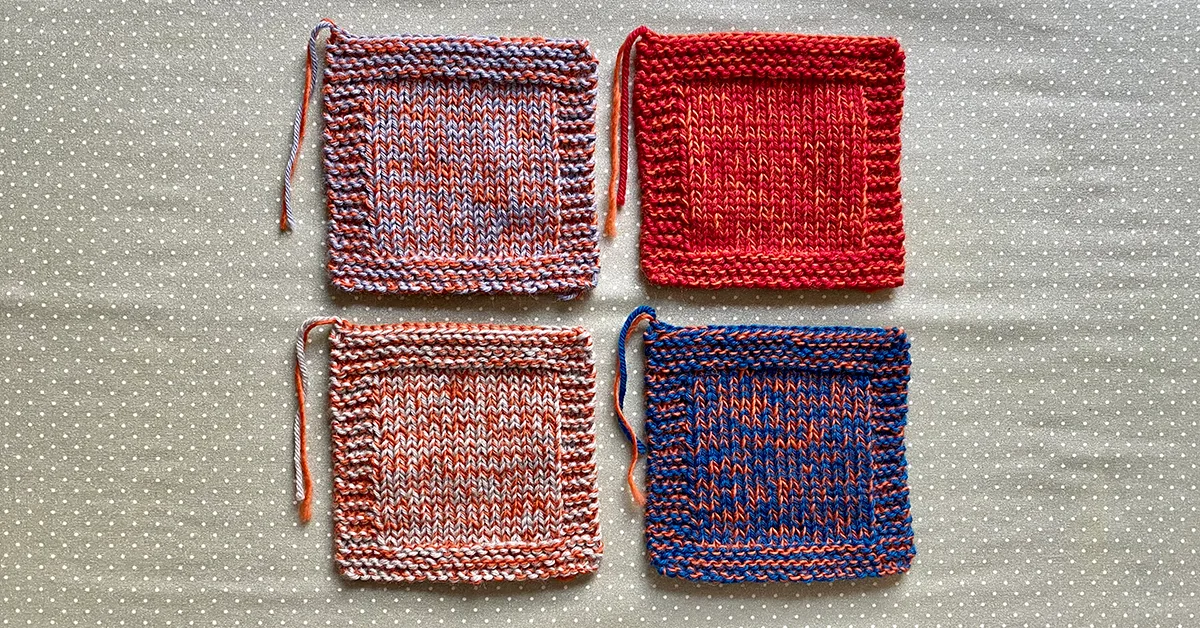
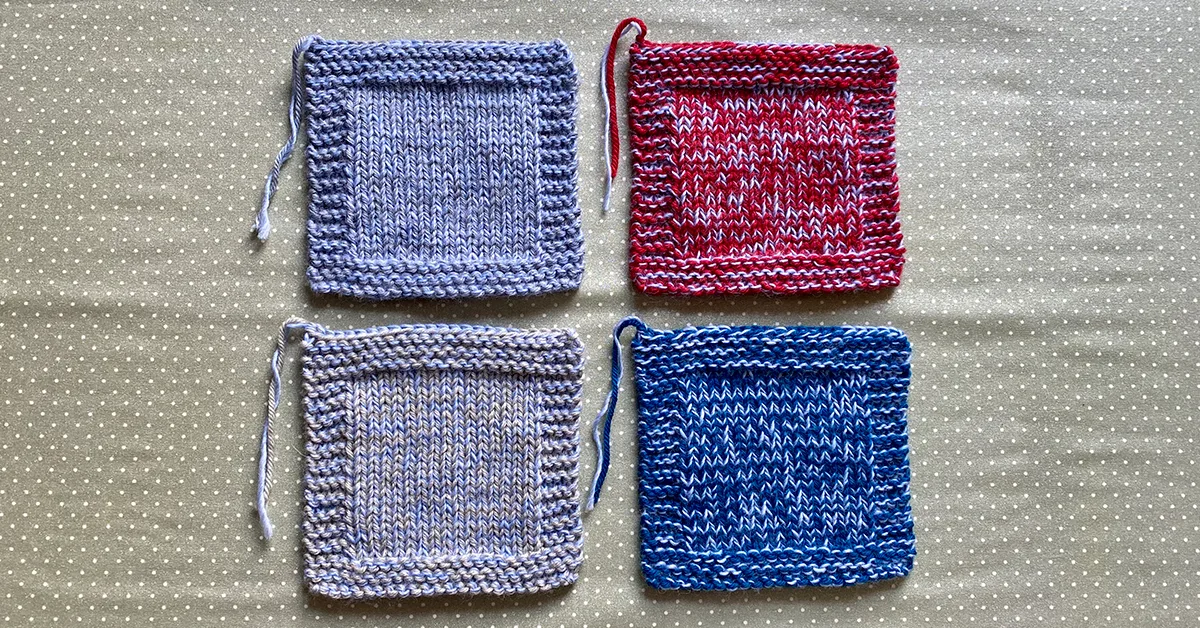
To create the color combinations in our double-stranded swatches, we paired four Wooly colors—Sky Blue, Red Fox, Dark Teal, and Feather—with two Skylark colors, Pumpkin Pie and Spring Blue.
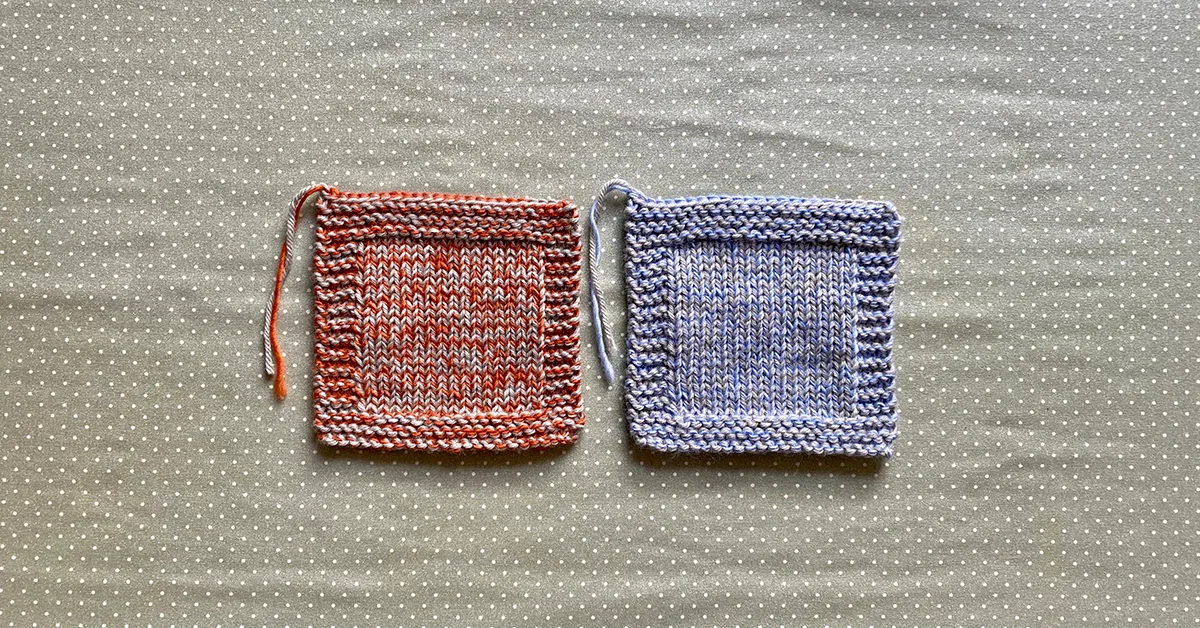
These two shades of Skylark are on the opposite ends of the color wheel, which creates a dramatically different effect when paired with the one shade of Wooly, like the swatches above where Feather is paired with Pumpkin Pie (left) and Spring Blue. The swatch on the left has a rugged, sporty look, while the swatch on the right looks more pretty and delicate.
Let’s take a closer look at the color theory behind these pairings. Before we begin, here’s a quick refresher on the color wheel:
Primary Colors: Red, Yellow, Blue
Secondary Colors: Orange, Green, Violet
Tertiary Colors: Red-Orange, Yellow-Orange, Yellow-Green, Blue-Green, Blue-Violet, Red-Violet
Primary + Secondary Color (Red Fox + Pumpkin Pie)
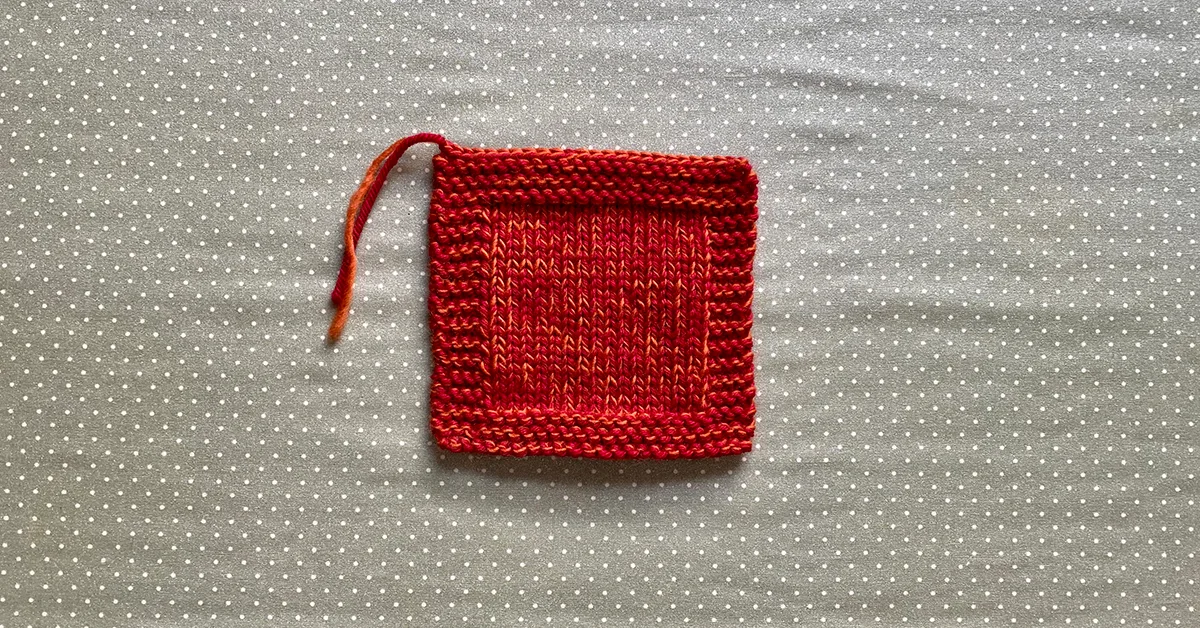
If you’re new to creating color combinations when double stranding yarns, pairing primary and secondary colors is a great starting point. (Together these are known as analogous colors, or colors that are placed next to one another on the color wheel.) A primary and secondary color combined will create a tertiary color, which is a color combination that never fails. Red Fox Wooly and orange Pumpkin Pie Skylark were double stranded for this swatch. The pairing of these two yarns creates a warm, vivid shade of red-orange.
Primary + Tertiary Color (Spring Blue + Dark Teal)

Are you looking to take your double-stranded color combinations to the next level? Pairing primary and tertiary yarn colors creates even more dimension. Take a look at the swatch shown here: For the primary shade, we used Spring Blue Skylark, a light shade of blue. For the tertiary shade, blue-green, we used Dark Teal Wooly, which is a shade of blue with a slight hint of green. Holding the two yarns together creates an even more intense shade of blue. (Another primary-tertiary pairing you could try: Magical Forest Skylark, a deep emerald green, with Khaki Green Wooly, a yellow-green olive.)
Primary + Primary Color (Red Fox + Spring Blue)
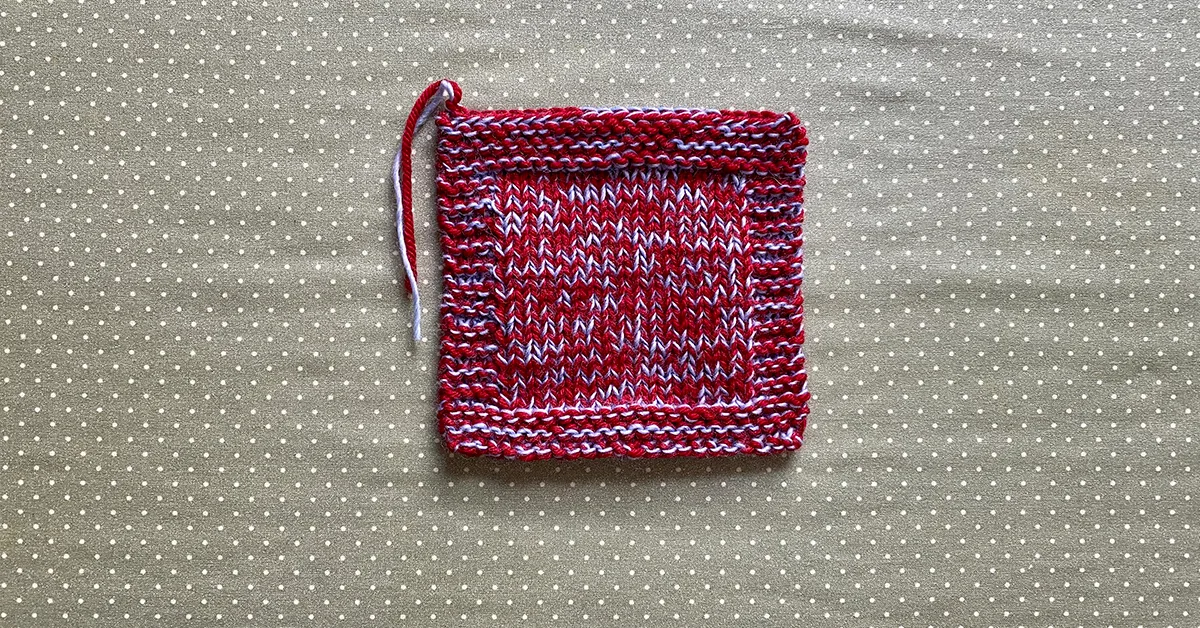
The three basics that can be mixed together to create every other color in the spectrum, primary hues are the building blocks of color. Combining two primary colors makes for a bold and playful look that’s especially great for children’s clothing. Red Fox Wooly and Spring Blue Skylark were held together to knit this swatch. Here, the look is elevated thanks to the blue undertones in Red Fox, which harmonize, rather than contrast, with the blue of Spring Blue.
Complimentary Colors (Dark Teal + Pumpkin Pie, Spring Blue + Pumpkin Pie)
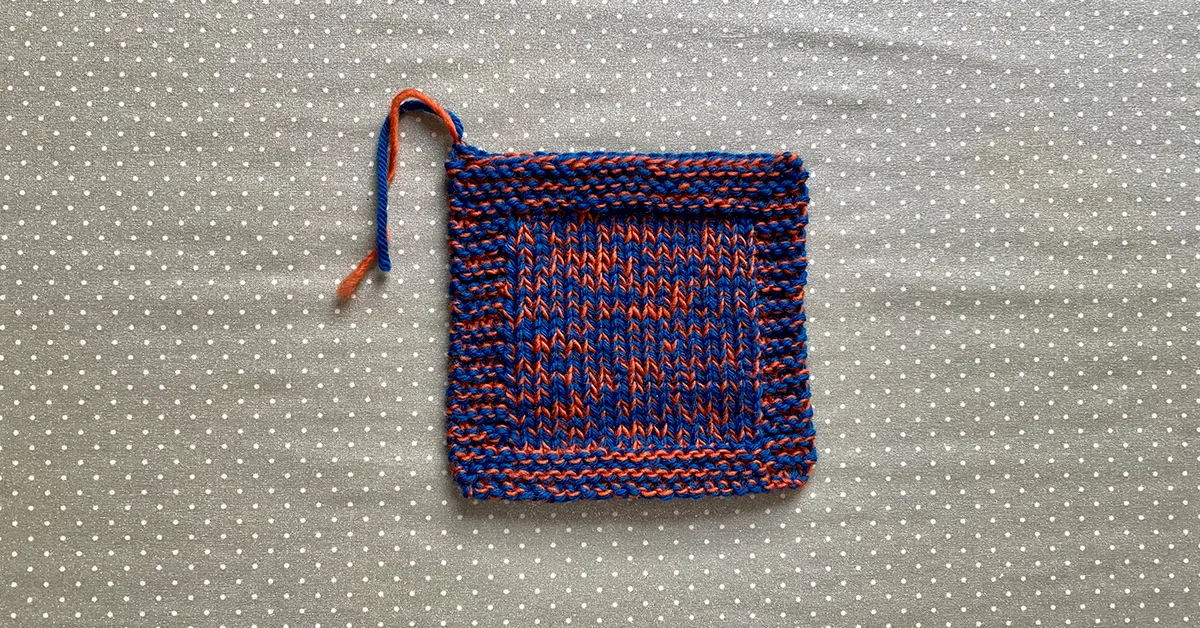

Complimentary colors are found on the opposite sides of the color wheel (think red and green.) Putting complimentary colors together creates a dramatic high-contrast effect. Complimentary colors also have a tendency to neutralize one another: In the swatch shown left, the orange in Pumpkin Pie Skylark tones down the blue of Dark Teal Wooly, bringing it closer to a green teal. In the swatch shown right, Pumpkin Pie makes Spring Blue Wooly, a gray-blue, appear more gray.
Monochromatic Colors (Sky Blue + Spring Blue)
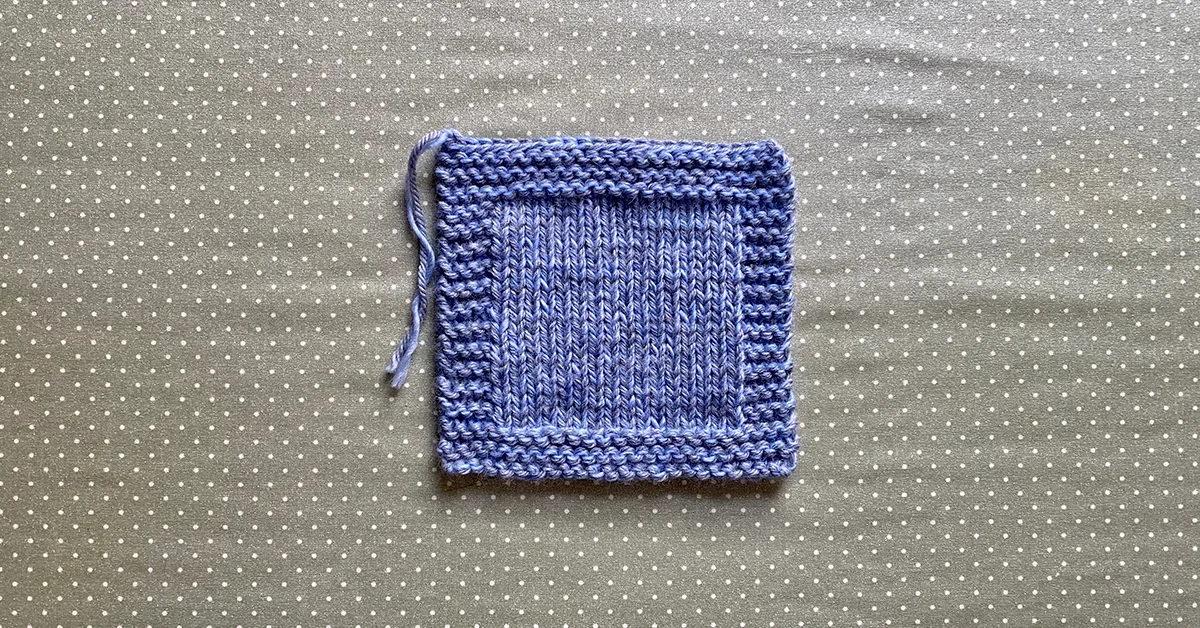
Monochromatic colors feature different light and dark versions of the same color. Darker colors are known as shades, lighter colors are known as tints, and grayish colors—which include most pastels—are known as tones. Pastel Sky Blue Wooly is a tone of blue, whereas light Spring Blue Skylark is a tint of blue. Held together, the two yarn colors create a lovely ethereal blue color. The yarn colors almost seem to melt into one another, creating a shimmering tonal effect.
With more than 100 possible color combinations, the world of color is your oyster when you double strand Wooly and Skylark. We hope this post has brought you some inspiration as you plan your spring knitting projects!













